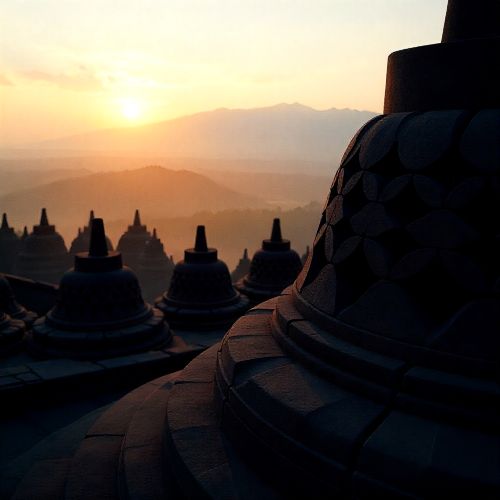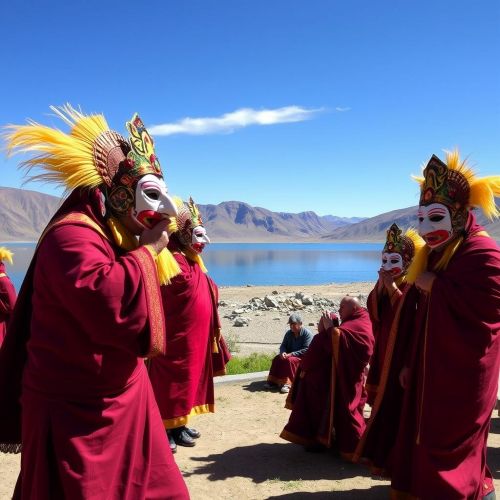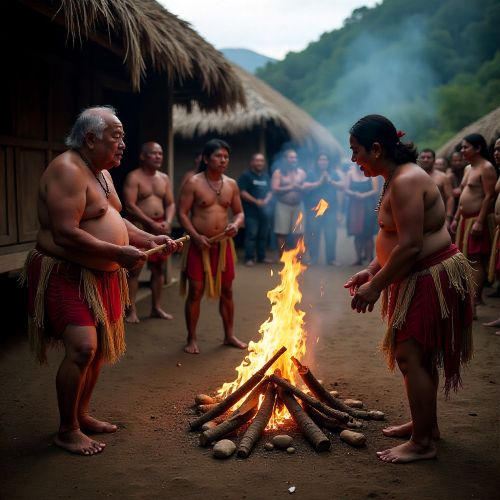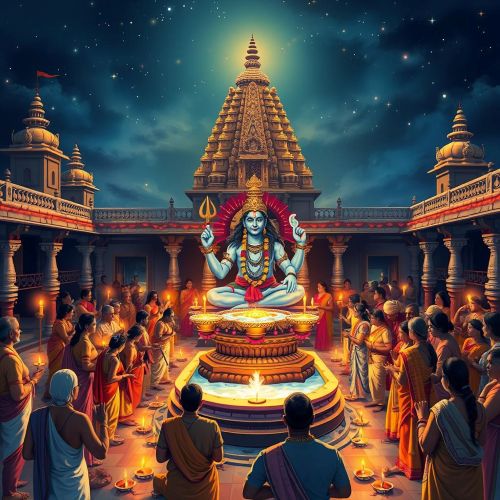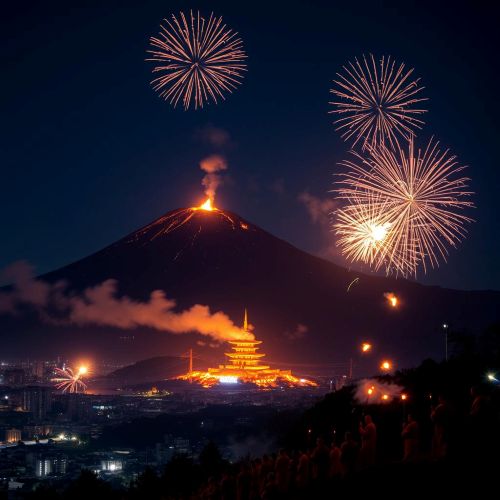Kumbh Mela : World’s Largest Spiritual Gathering
At a glance
| Description | |
|---|---|
| Location | Uttar Pradesh |
| Country | India |
| Dedicated To | Samudra Manthan (Churning of the Ocean of Milk) |
| Duration | 45 – 90 days |
| Time of Year | Varies |
Introduction
The Kumbh Mela is the largest spiritual congregation on Earth, celebrated as a living testament to India’s enduring religious traditions. Held cyclically at Prayagraj, Haridwar, Nashik, and Ujjain, the festival brings together millions of devotees, ascetics, and seekers from across the globe. The term “Kumbh” signifies a pitcher, symbolizing the vessel of immortality, while “Mela” refers to a gathering. Together, the Kumbh Mela becomes a convergence of mythology, faith, ritual, and community.
Every site of the festival has a deep connection with sacred rivers—the Ganga, Yamuna, Saraswati, Godavari, and Shipra—turning their banks into transformative spaces of purification. The timing of the Mela is determined by precise astrological alignments, making it not only a religious event but also a reflection of Hindu cosmology. In 2025, the Maha Kumbh Mela in Prayagraj is expected to be one of the largest gatherings in history, symbolizing continuity between ancient traditions and contemporary spiritual aspirations.
Connection with Mythology
The origins of the Kumbh Mela are woven into Hindu mythology, particularly the tale of Samudra Manthan, the churning of the cosmic ocean. According to the Puranas, Devas and Asuras worked together to churn the primordial waters in search of Amrit, the nectar of eternal life. When the pot containing the nectar surfaced, a fierce struggle ensued. In this divine conflict, drops of Amrit spilled onto four earthly sites—Prayagraj, Haridwar, Nashik, and Ujjain. These sacred cities became eternal hosts of the Kumbh Mela.
Each location is tied to celestial alignments, reinforcing the cosmic rhythm of the festival. For example, Prayagraj’s Kumbh occurs when Jupiter is in Taurus and the Sun and Moon align in Capricorn. This cosmic timing is said to infuse the rivers with divine potency, turning the act of bathing into a spiritual rebirth. The myth does not merely explain geography but transforms it, turning rivers into sacred vessels of cosmic memory. Through this story, Kumbh Mela becomes more than an event—it is the re-enactment of a myth that binds heaven and earth together.
Main Activities
The ritual bathing in sacred rivers is the most significant act of the Kumbh Mela. Devotees believe that immersing in the waters during astrologically auspicious moments cleanses lifetimes of sins and opens the path to Moksha, or liberation. The first bath, known as the Shahi Snan, is led by Naga Sadhus and ascetic orders, marking the ceremonial opening of the festival. These processions are a striking spectacle, with saffron flags, chants of devotion, and ascetics covered in ash taking their ritual dip.
Alongside bathing, the Kumbh Mela offers a spiritual theater where traditions come alive. Akharas, the monastic orders of saints, set up camps that become centers of discourse, worship, and initiation. Pilgrims attend satsangs and kathas, where revered saints interpret scriptures and guide devotees on the path of dharma. Rituals such as yajnas (fire sacrifices) and homas fill the air with chants of mantras, while kalpavasis choose to live simply on the riverbanks, dedicating their time to meditation and fasting throughout the Mela.
Cultural expressions also play a vital role. Folk music, devotional dances, and dramatic reenactments of mythological tales create a vibrant atmosphere. Visitors explore exhibitions that highlight India’s philosophical heritage, while charitable practices such as mass feeding (bhandaras) reaffirm the Mela’s spirit of generosity. Together, these activities weave a fabric of devotion, art, and community life that defines the Kumbh experience.
Importance in Cultural History
The Kumbh Mela is not merely a religious event but also a cultural archive that has shaped India’s civilizational identity for centuries. Its references appear in ancient texts such as the Mahabharata and in the 7th-century account of the Chinese traveler Xuanzang. Over time, the Mela evolved into a platform where spiritual ideas and social values were exchanged, creating a living continuity of traditions.
The event serves as a space where caste, region, and social divisions dissolve, emphasizing collective identity over individual difference. Its role in strengthening community bonds has been historically recognized by rulers, saints, and reformers alike. UNESCO’s designation of the Kumbh Mela as an Intangible Cultural Heritage of Humanity affirms its global significance as a keeper of knowledge, philosophy, and ritual practices.
Economically, the Mela has long generated activity. Records from the colonial era note trade, pilgrim markets, and financial exchanges that accompanied the gathering. Today, the festival continues to stimulate local economies, infrastructure development, and tourism, making it a catalyst for both spiritual and material prosperity. The sanctity of rivers at the heart of the Mela also underscores India’s ecological consciousness, reminding participants of the deep relationship between spirituality and the natural world.
International Appeal
In the 21st century, the Kumbh Mela has transformed into a global phenomenon, drawing participants from every corner of the world. Pilgrims, researchers, photographers, and spiritual seekers travel from countries such as the United States, Japan, South Korea, and across Europe to witness its scale and partake in its rituals. The Mela offers them not just a religious experience but also an immersion in India’s spiritual and cultural ethos.
The global fascination with yoga, meditation, and Hindu philosophy has heightened international interest in the Kumbh. Universities and research centers, including Harvard and MIT, have studied its crowd management, logistics, and symbolic significance. Documentaries, photo essays, and global media coverage have turned the Kumbh Mela into a subject of academic and artistic exploration.
For the upcoming Maha Kumbh 2025 in Prayagraj, the Indian government anticipates a record-breaking attendance of over 400 million visitors, including millions of international tourists. Initiatives such as cultural summits, exhibitions on sustainability, and global outreach programs further strengthen its role as a platform for cultural diplomacy. By fostering dialogue and showcasing the principle of Vasudhaiva Kutumbakam—the world is one family—the Kumbh Mela extends India’s spiritual soft power on a global stage.
The international appeal of Kumbh Mela lies in its ability to transcend boundaries. For some, it is an act of pilgrimage; for others, it is an opportunity to study an unparalleled human gathering. Yet, for all who attend, it is an experience of unity, devotion, and the timeless search for the divine.
Source
Altekar, A. S. (1958). Kumbh Mela: A Historical and Cultural Study. Banaras Hindu University Press.
Bhattacharya, N. (2005). History of the Hindu Religious Assemblies. Oxford University Press.
Doniger, W. (2009). The Hindus: An Alternative History. Penguin Books.
Parpola, S. (2010). The Roots of Hinduism: The Early Aryans and the Indus Civilization. Oxford University Press.
UNESCO. (2017). Kumbh Mela, the festival of the sacred pitcher. Retrieved from https://ich.unesco.org/en/RL/kumbh-mela-the-festival-of-the-sacred-pitcher-01258
Harvard University. (2013). Mapping the Kumbh Mela. Retrieved from https://kumbhmela.harvard.edu
Prof Shantesh Kumar Singh & Dr Ravi Shankar Raj. (2025). Mahakumbh 2025: Harnessing India’s Civilisational Soft Power in … https://chintan.indiafoundation.in/articles/mahakumbh-2025-harnessing-indias-civilisational-soft-power-in-global-diplomacy/
Kumbh Mela Religious Gathering as a Massive … (2021). https://pmc.ncbi.nlm.nih.gov/articles/PMC8592171/
Contributors to Wikimedia projects. (n.d.). Kumbh Mela – Wikipedia. https://en.wikipedia.org/wiki/Kumbh_Mela
Frequently Asked Questions
Lorem ipsum dolor sit amet, consectetur adipiscing?
Lorem ipsum dolor sit amet, consectetur adipiscing elit. Praesent convallis vestibulum justo, ac tincidunt nunc vehicula quis. Nullam id dolor quis orci malesuada feugiat. Curabitur aliquet libero at urna ullamcorper, ac ultricies nulla dapibus.
Lorem ipsum dolor sit amet, consectetur adipiscing?
Lorem ipsum dolor sit amet, consectetur adipiscing elit. Praesent convallis vestibulum justo, ac tincidunt nunc vehicula quis. Nullam id dolor quis orci malesuada feugiat. Curabitur aliquet libero at urna ullamcorper, ac ultricies nulla dapibus.
Lorem ipsum dolor sit amet, consectetur adipiscing?
Lorem ipsum dolor sit amet, consectetur adipiscing elit. Praesent convallis vestibulum justo, ac tincidunt nunc vehicula quis. Nullam id dolor quis orci malesuada feugiat. Curabitur aliquet libero at urna ullamcorper, ac ultricies nulla dapibus.
Lorem ipsum dolor sit amet, consectetur adipiscing?
Lorem ipsum dolor sit amet, consectetur adipiscing elit. Praesent convallis vestibulum justo, ac tincidunt nunc vehicula quis. Nullam id dolor quis orci malesuada feugiat. Curabitur aliquet libero at urna ullamcorper, ac ultricies nulla dapibus.
Lorem ipsum dolor sit amet, consectetur adipiscing?
Lorem ipsum dolor sit amet, consectetur adipiscing elit. Praesent convallis vestibulum justo, ac tincidunt nunc vehicula quis. Nullam id dolor quis orci malesuada feugiat. Curabitur aliquet libero at urna ullamcorper, ac ultricies nulla dapibus.




